Why Trieste Deserves a Spot on Your Italy Itinerary
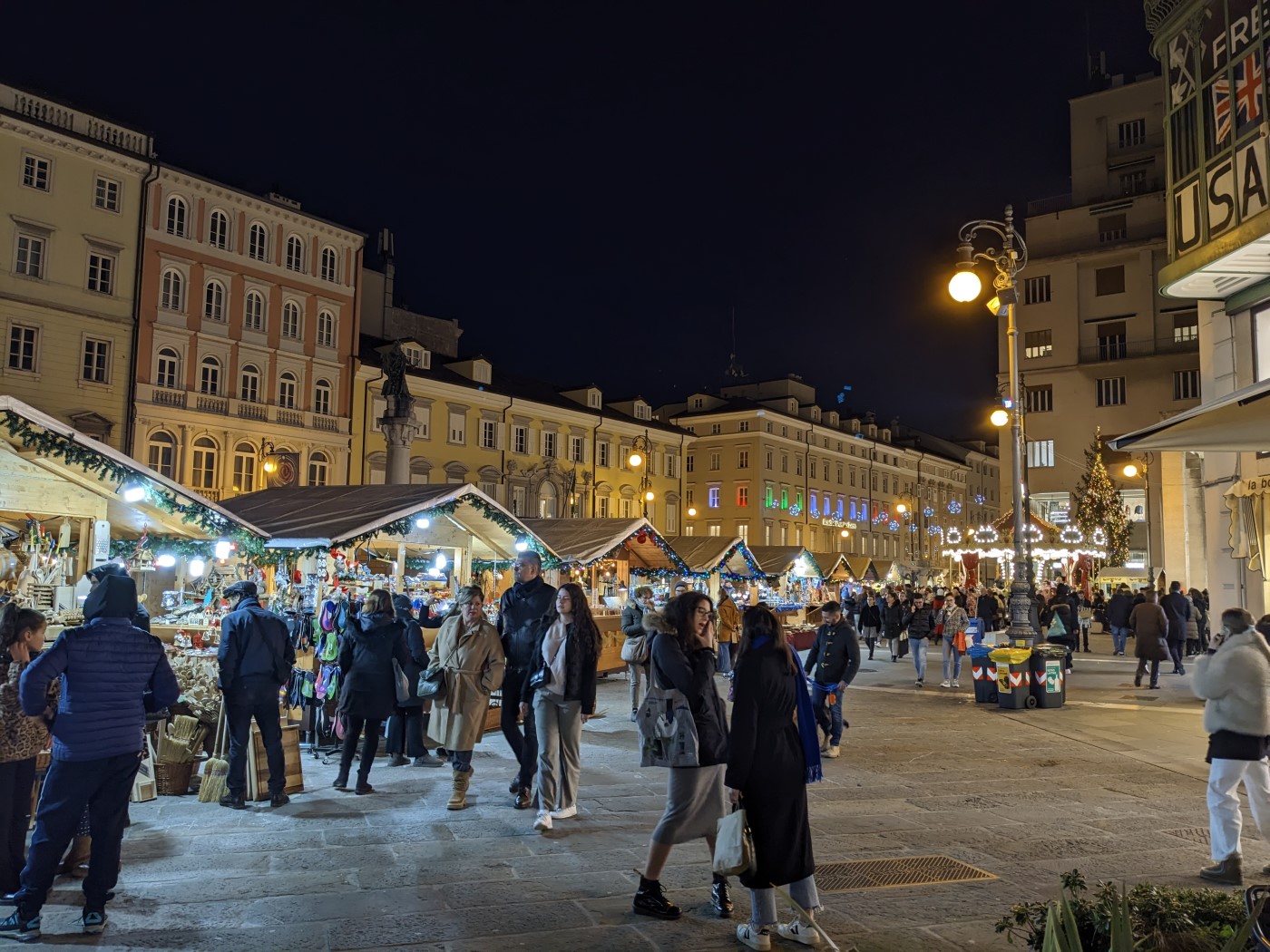
I adore coffee, I can never say no to a slice of apple strudel, and I could live on prosciutto crudo alone… so where better to indulge in all three than Trieste? When our son was accepted to study at the University of Trieste, I turned to my husband and said, “Let’s move there for a few years.” Add to that the fact that Trieste is often rated the best place to live in all of Italy—well, the decision made itself.
We packed our things and moved. And once we settled in, we fell completely in love. Trieste is simply extraordinary—elegant, historic, welcoming, and full of surprises. Yet so few people outside of Italy seem to know about it. To be honest, even many Italians haven’t truly discovered it!
It feels like our little secret, and I can’t wait to share it with you. Just… don’t tell too many people, okay?
Let's go explore...
So, why is Trieste so wonderful?
James Joyce, the famous Irish writer, absolutely loved the city and made it his home, and I completely understand why he loved it so much. With stunning coastal views, the best coffee scene in Italy, ancient castles, and historic cafés, Trieste is an intoxicating blend of the best of Italy spiced up with Austrian flavors and Eastern European touches. It inspired James Joyce to write his best books about life in Dublin... while living here.
In the center of town, you can walk in any direction, and, in the space of twenty minutes, you might find yourself alongside a grand canal reminiscent of Venice, admiring a Roman theater, strolling boulevards lined with cafes, gazing out to sea on the walls of a hilltop castle, or lost in the narrow streets of an old town that is so like Vienna. Few other cities in Italy offer anywhere near that sort of variety.
Where to Stay
Trieste is a little limited when it comes to hotels. I guess it is as a result of the city not being on the follow-the-herd tourist route, so you'll not find the vast range of hotels you'll find in Florence, Venice, Rome, or on the Amalfi Coast. The few that exist are often dated and a bit ragged at the edges.
There are a few excellent exceptions, though, and the best of them all is the Savoia Excelsior Palace Hotel. It's a four-star hotel but better than many a five-star hotel. The location is Prime Position, with sea views and the old town on your doorstep.
A more affordable option, in a central location, is the Hotel Italia.
Things to Do in Trieste
Start in Piazza Unità 'Italia

They say that Trieste’s soul can be found in Piazza Unità d'Italia, and they are right. This is the largest sea-facing square in Europe and the meeting place of locals. Surrounded by stately buildings that remind me of Vienna, the square opens out onto the Adriatic Sea in a breathtaking view.
The grand Palazzo del Municipio, Palazzo del Governo, and the historic Caffè degli Specchi define this space. I love Caffè degli Specchi. There's something magical about sitting at Caffè degli Specchi with a coffee and watching the world go by. You can almost feel the history of Trieste unfold around you, and, just for a moment, you are a part of that, writing new histories as you sip.
Trieste’s Old Town: A Stroll Through History
Exploring Trieste’s Old Town is something I'll never get tired of doing. It’s the part of Trieste where you feel the heartbeat of the city’s history and one of my favorite things to do in Trieste.
Start your journey at Piazza Cavana. This lively square is surrounded by colorful buildings, cozy cafés, and artisan shops. It’s the perfect place to grab a coffee and people-watch before heading deeper into the old streets. From here, wander towards the Arco di Riccardo, an ancient Roman arch that’s more than 2,000 years old.
Strolling along Via Cavana, you’ll come across charming trattorias and osterias, where locals gather for a glass of wine and a plate of jota, Trieste’s hearty bean and sauerkraut soup. This street embodies the essence of Trieste—colorful, laid-back, and full of life.
Nearby is the Serbian Orthodox Church of St. Spyridon, with its distinctive domes and intricate mosaics. It is one of the loveliest churches in Trieste.
One of the most impressive buildings in the Old Town is the Palazzo Carciotti. This elegant 19th-century palace, with its neoclassical style and grand columns, recalls Trieste’s days as a major trade hub. It is still the biggest port in Italy in terms of freight volumes, and nearly all of the coffee beans that go to make the espresso drunk throughout Italy still go through this port.
Don’t miss the Museo Revoltella, a highlight for art lovers. Housed in a grand 19th-century palace, the museum boasts a stunning collection of modern and contemporary art. It’s not just the paintings inside; it’s the building itself that’s a masterpiece!
Another favorite of mine in the Old Town is Piazza della Borsa, once the financial heart of the city during its Austro-Hungarian period. Piazza della Borsa has this unique energy, a blend of history and modern life all swirling together. It's the kind of place where you can sense how powerful and important Trieste once was.
The Old Town isn’t just about grand buildings and history, though. It’s also about the little moments that make Trieste so special. One of my favorite things to do is simply wander and see what surprises I stumble upon. Whether it’s a hidden courtyard draped in vines or a street musician playing on a quiet corner, the Old Town offers an endless stream of delightful discoveries. Every step you take here reminds you of how deeply rooted this city is in history, and yet how alive it still feels.
If you’re lucky, you might catch a glimpse of one of Trieste’s many cats lounging in the sun, as they’ve practically claimed the Old Town as their own. Trieste’s cats seem to know this city better than anyone—they’ve certainly made it their kingdom!
Castello di Miramare: A Fairytale on the Adriatic
Just a short drive from the center of Trieste, you’ll find one of those places that makes you stop and whisper wow—Castello di Miramare. Perched right on a cliff above the sea, it honestly looks like it was dreamt up in a fairy tale. It was built in the 1800s for Archduke Ferdinand Maximilian of Austria, and stepping inside feels like stepping into another world—elegant rooms, rich wood, and old-world charm at every turn.
But I have to say, it’s the gardens that completely stole my heart.
Maximilian designed them himself—imagine that! He brought in trees and plants from all over the world, and today they line quiet pathways that wind through shady groves and sunny lawns. There are fountains tucked into little corners, benches for pausing and breathing it all in, and every now and then you catch a glimpse of the Adriatic, glittering far below.
And then… the view from the terrace. I don’t even know how to describe it properly. The sea stretches out forever, the air is fresh with the scent of salt, and if you’re lucky enough to be there at sunset—well, it’s something truly special.
If you're in Trieste, promise me you'll go. It’s one of those peaceful, soul-filling places that stays with you long after you’ve left.
A Tragic Love Story
When I first laid eyes on Castello di Miramare, I felt something more than just admiration for its beauty—it was almost as if the walls whispered a story. And what a story it is... one of deep love, dreams built by the sea, and a heartbreak that lingers in the ocean breeze.
This fairytale castle was the dream of Archduke Ferdinand Maximilian of Austria, who fell in love twice—once with the stunning coast of Trieste, and again with his wife, Charlotte of Belgium. He imagined a magical home for the two of them, a place of serenity and beauty where they could start their life together.
They spent cherished moments here while the castle took shape. Charlotte was by his side, and together they designed the gardens, bringing in rare plants and creating little corners of peace and joy. You can feel their love in every stone, every path that winds through the greenery.
But fate had other plans. Maximilian accepted the crown of Mexico—a world away from Trieste. And there, in a land he barely knew, his life ended tragically. He was executed in 1867, leaving Charlotte broken.
The grief-stricken Charlotte, now a widow, returned to the castle but could never recover from the loss. She fell into a deep depression and began to show signs of severe mental instability, convinced that Maximilian was still alive. Her sorrow, much like Juliet’s despair over Romeo, consumed her. She would spend the rest of her life in isolation in dreary, grey Belgium, far from the beloved castle they had dreamed of sharing.
Getting to Castello di Miramare by Bus
By bus the trip is easy and scenic—just the way I like it!
Here’s how to do it:
- Take Bus Line 6 – This bus leaves from just outside the train station (look for the bus stop near Piazza della Libertà).
- Stay on the bus for about 25–30 minutes. The ride takes you along the coast with gorgeous views of the Adriatic.
- Get off at the Grignano/Miramare stop. From there, it’s about a 10-minute walk through a leafy path to reach the castle entrance.
Buses run frequently, but it’s always a good idea to check the latest schedule, especially on Sundays or holidays.
You can use a regular Trieste city bus ticket, which you can buy at newsstands or tabacchi near the station. Don’t forget to validate your ticket once onboard!
Getting to Castello di Miramare by car from Trieste train station
Here’s how to go:
- From Trieste Centrale station, take the SS14 coastal road heading northwest toward Barcola and Grignano.
- The drive is about 8–10 kilometers and takes 15–20 minutes, depending on traffic.
- You'll enjoy a gorgeous coastal route with views of the Adriatic—definitely worth taking it slow!
🅿️ Parking:
There’s a paid public parking lot near the entrance to the castle park (Parcheggio di Miramare), just off Viale Miramare. From there, it’s a pleasant 10-minute walk through the park to the castle itself.
🚗 Tip from me:
Try to arrive early during summer or weekends—parking fills up quickly. And if you're planning to stay until sunset (which is magical from Miramare), keep an eye on the parking hours to avoid fines.
It's an easy and scenic drive, and arriving by car gives you the flexibility to explore nearby spots like Barcola or even head up to Duino afterward!
Duino
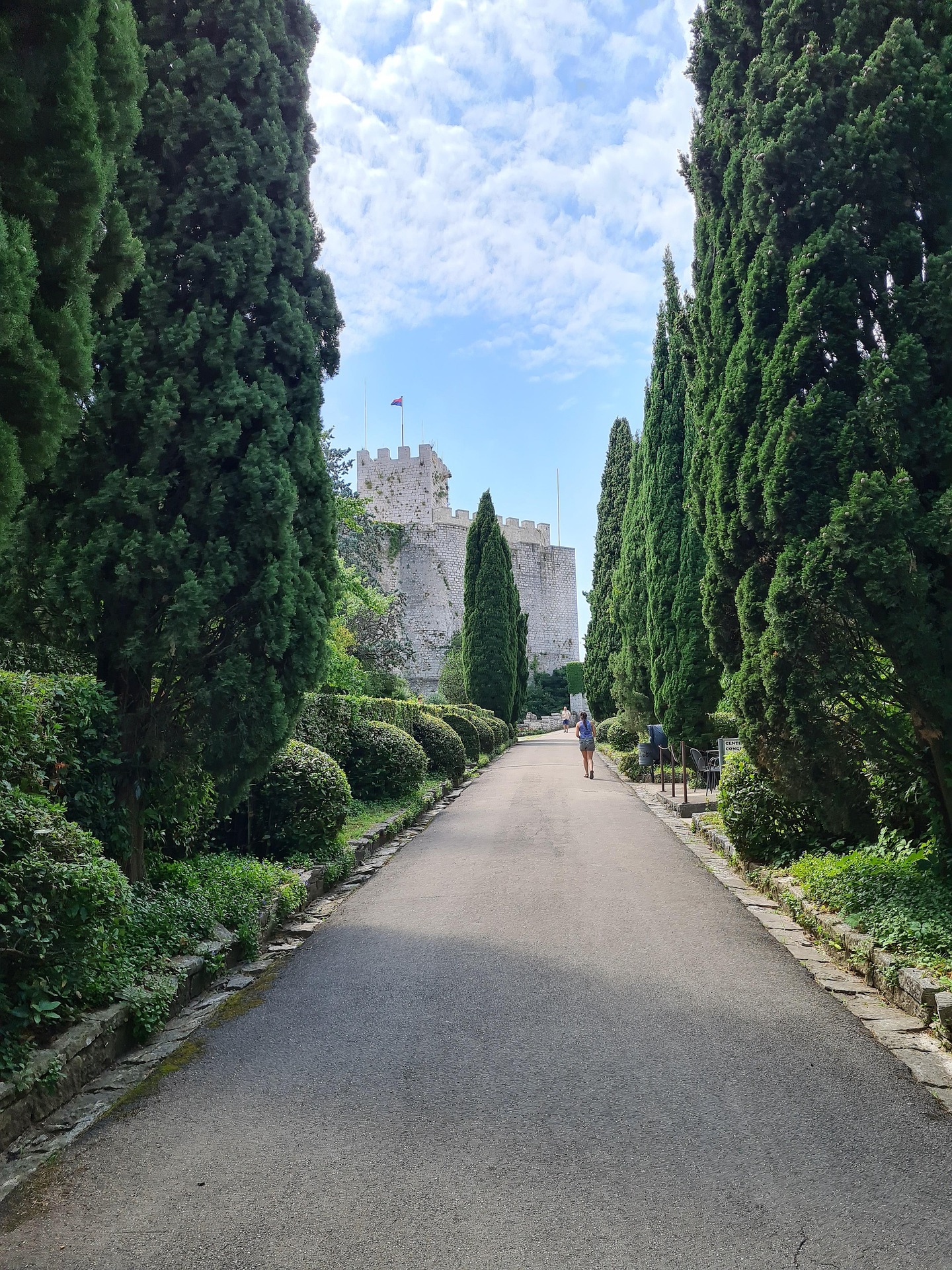
Just a 20-minute drive from Trieste, Duino is famous for its cliffside castle, romantic legends, and the spectacular Rilke Trail—a walking path that winds along the cliffs between Duino and Sistiana, with jaw-dropping views over the Gulf of Trieste. It’s named after the poet Rainer Maria Rilke, who found inspiration here while staying at Duino Castle.
Now, about the castle: unlike Miramare, Duino Castle is still lived in by the same noble family who built it centuries ago, yet parts of it are open to the public. Inside, you’ll find elegant rooms, family treasures, and stories that span the centuries. Outside, there are terraced gardens with panoramic views that feel like something out of a fairy tale.
And don’t miss the legend of the White Lady—a ghost said to haunt the cliffs, born from a tragic love story (Italy seems to have a few of those!).
San Giusto Castle and Cathedral
The walk up the steep and narrow streets of the old neighborhoods of Trieste to San Giusto Castle and Cathedral is wonderful. And, once you reach the top of the hill and arrive at the castle, you'll find that this 15th-century castle offers absolutely stunning views of Trieste and the surrounding sea.
The Lapidario Museum (Civico Museo Lapidario di Trieste), located within the Castle of San Giusto, contains a fascinating collection of Roman and medieval stone artifacts, including inscriptions, sarcophagi, and statues that date back centuries.
One of the most significant figures associated with the museum and Trieste is Johann Joachim Winckelmann, the renowned German art historian and archaeologist, often regarded as the father of modern archaeology and art history. Winckelmann lived in Trieste in the 18th century and was a key figure in promoting classical Greek and Roman art. Tragically, his life came to a sudden end in Trieste when he was murdered in 1768 under mysterious circumstances while staying at an inn.
Right next door, you’ll find the San Giusto Cathedral, an ancient blend of Romanesque and Gothic architecture, adorned with beautiful mosaics. I always feel a sense of peace in San Giusto Cathedral. If you'd like to go up to the top of the bell tower, there is a small fee to pay; the view makes it well worth it... if your knees don't mind the steep climb to the top.
Parks in Trieste
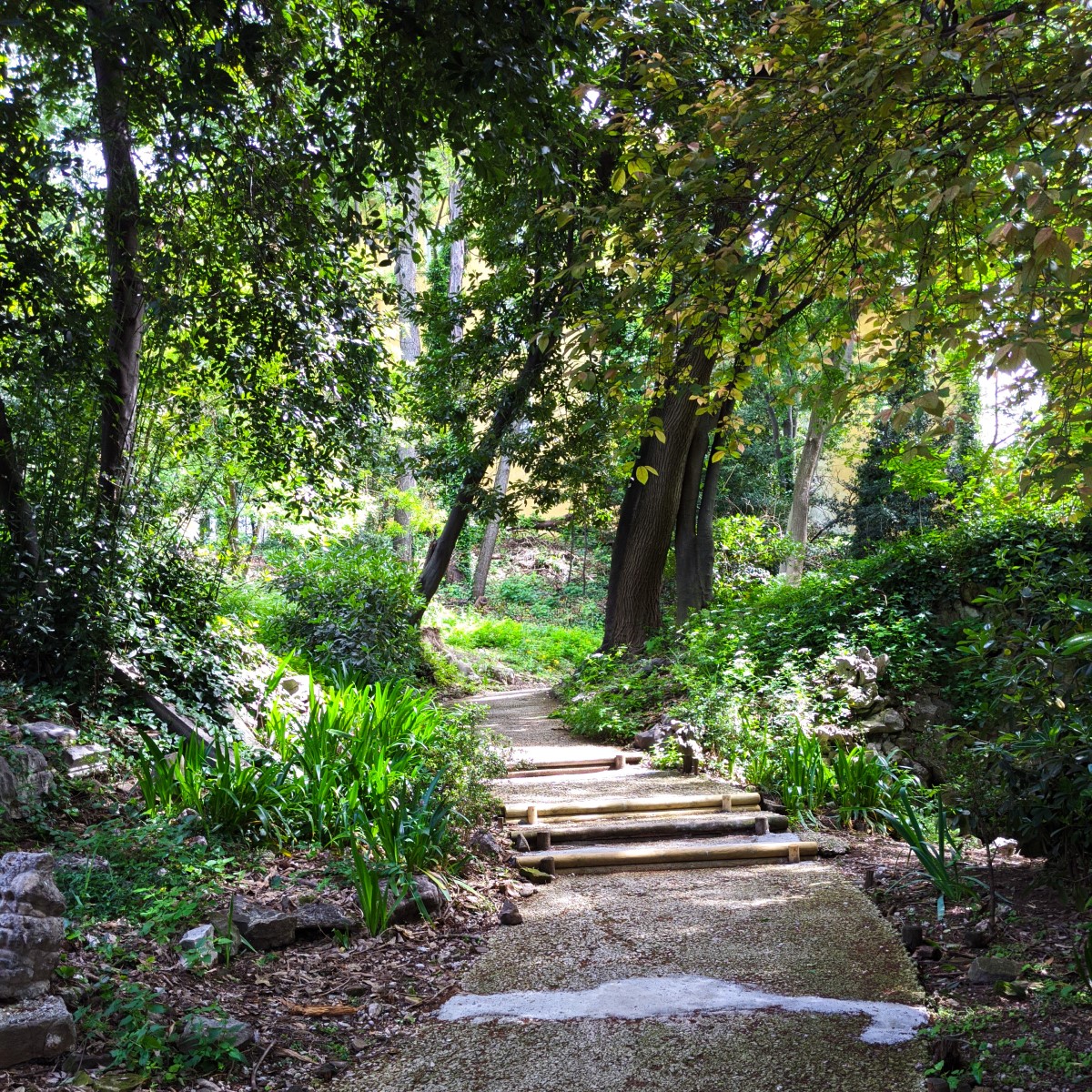 The Giardino di Via San Michele
The Giardino di Via San MicheleSadly, Trieste has few parks right in the central city. However, there are many wonderful parks on the outskirts, like the Miramare Castele Gardens I mentioned previously, and others like the rose gardens of Roseto di San Giovanni and the immense Parco Farneto, known locally as Boschetto, which is a large woodland that’s ideal for an escape into nature right on the doorstep of the city.
In the city itself, my favorite is the Giardino di Via San Michele. It is just below the San Giusto Cathedral and is wonderful—offering a tranquil escape into shady coolness on a hot summer's day.
Nearby is the Parco della Rimembranza, offering not only green spaces and tranquility but also panoramic views over the city and the Gulf of Trieste. The park was established as a memorial to the fallen soldiers of World War I, and many of the paths are lined with stone monuments and plaques commemorating those who lost their lives. It really makes one hope and pray that we never end up in that situation ever again.
The Roman Theater
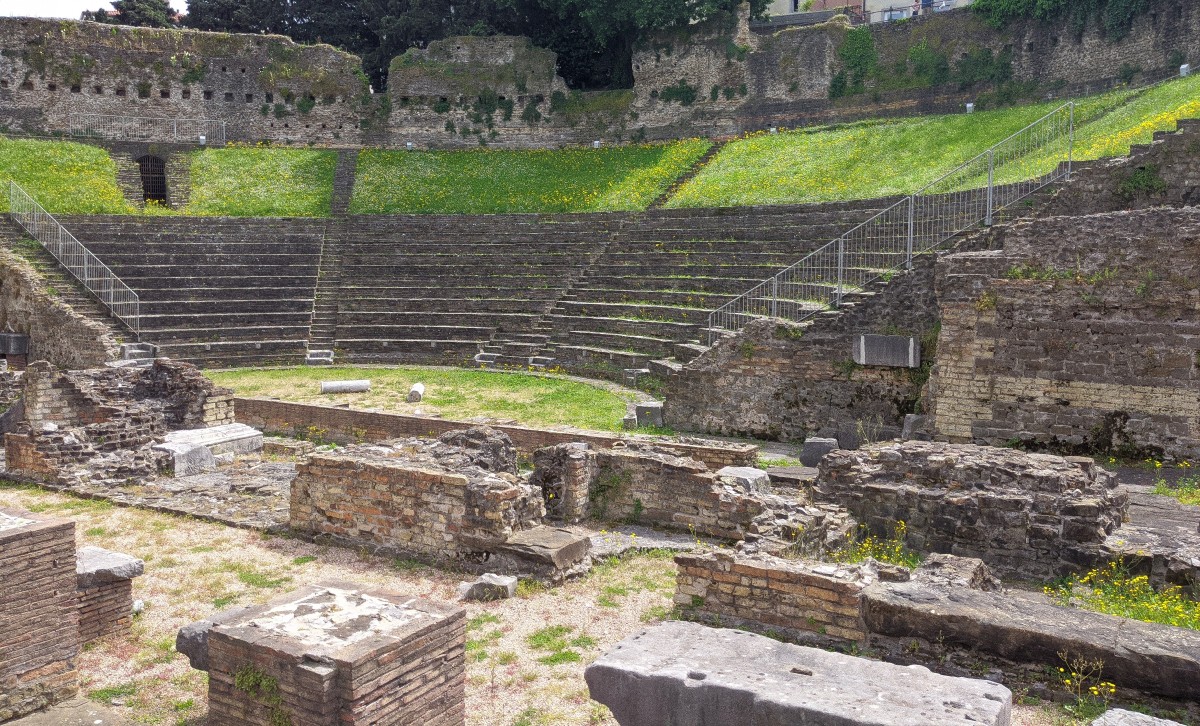
Right in the middle of modern Trieste lies a relic from its Roman past—the Roman Theater. Dating back to the 1st century AD, this open-air theater once seated around 6,000 people for public performances. Today, it’s still used for events and festivals, blending ancient history with contemporary culture.
This theater is a reminder of how old Trieste really is; it’s incredible to think about the people who sat here, watching performances two millennia ago.
The Canale Grande: Trieste’s Waterfront Gem
Don’t miss a stroll along the Canale Grande. It’s one of my favorite spots in the city. Once upon a time, ships would glide right into this canal, unloading goods straight into the heart of Trieste. These days? It’s all about soaking up the charm.
One of my favorite things to do is to grab a coffee at one of the little cafés lining the canal and just watch the world drift by—locals chatting, boats bobbing gently in the water, and the gentle hum of Trieste life all around. Slow down, breathe in the sea air, and simply enjoy the moment. And honestly, that’s what Italy is all about.
There’s even a statue of James Joyce, the Irish writer who lived here for a while. You’ll find him casually crossing the canal, as if on his way to a writing session.
At one end, the beautiful Church of Sant’Antonio Nuovo stands proudly over the water, while just around the corner, the Serbian Orthodox Church of San Spiridione adds an unexpected touch of Eastern elegance.
The World's ONLY Funicular Tram
Unique and a symbol of Trieste, featured on postcards for many decades, is the funny old Opicina tram/funicular that leads you from the center of the city up increasingly steep slopes until the tram turns into a funicular, leading to the little village in a city, the "suburb" of Opicina.
About the Tram
The Opicina Tramway (or Tram de Opcina, as the locals say) is no ordinary tram. It starts like any other streetcar, rolling gently through Trieste’s streets… But then things get interesting. As the hills rise sharply, the tram becomes a hybrid funicular—assisted by a cable system and a pushing wagon that helps it manage the steep incline. It’s like stepping into a piece of vintage Italy, a mix of nostalgia and ingenious engineering.
It’s been rattling up and down the hill since 1902 and is beloved by locals and visitors alike. The views? Bellissima! As you ascend, the Gulf of Trieste glitters below, and on a clear day, you might even spot Slovenia in the distance.
About Opicina
Opicina is where time slows down. Perched high above the city, this charming little suburb feels more like a Carso village than part of bustling Trieste. You’ll find old stone houses, peaceful walking paths through pine-scented woods, and cozy cafés where locals greet you with a nod and a smile.
Many Triestini come up here for a breath of fresh air, a scenic walk, or a coffee with a view. It’s the perfect escape from the city without ever really leaving it.
Scalone di Montuzza—or the Giant Steps
Tucked away in one of Trieste’s quiet corners, the Scalone di Montuzza—or the Giant Steps—offers one of the most unique and memorable strolls in the city. These massive, sweeping stone steps connect the lower town to the upper Via del Monte area and offer not just a workout for the legs but a visual treat for the eyes.
As you climb, you’ll notice the architecture shifting around you—faded pastel buildings, hidden courtyards, and the occasional splash of street art. There’s a certain rhythm to the steps, a kind of poetic calm, especially in the early morning or late afternoon when the sun casts soft shadows and the city sounds seem to hush.
At the top, you’re rewarded with sweeping views of Trieste, its rooftops tumbling down toward the sea. It’s one of those places that locals take for granted and visitors often stumble upon by accident—yet it stays with you.
There’s something romantic and slightly nostalgic about the Giant Steps. They're not flashy or famous, but they quietly tell the story of a city that’s layered, lived-in, and endlessly fascinating. Definitely worth the climb—and maybe even a little pause at the top to breathe it all in.
Risiera di San Sabba: A Somber Visit
While Trieste has a vibrant and colorful history, it’s important to remember its darker chapters too. Risiera di San Sabba, a former Nazi concentration camp, is now a memorial to the victims of World War II. It’s a powerful place to reflect on the atrocities of the past and pay respects to those who suffered.
Beaches Near Trieste: Sun and Sea
Barcola is the most popular area, located just a few kilometers from the city center. All along the promenade are concrete sunbathing spots with little swimming pool-style steps that lead down to the sea. It is always lively in summer, with people of all ages exercising, walking their dogs, sunbathing, or just hanging out together.
If you're looking for something a little different—and very Trieste—make time for a visit to La Lanterna, affectionately known by locals as Pedocin. It’s the last remaining segregated beach in all of Europe, where men and women still swim on separate sides of a dividing wall. The tradition goes all the way back to the 19th century, and, somehow, it’s still going strong.
I’ll admit, I was a little unsure the first time I went. But now? I genuinely enjoy it. There's something oddly relaxing about it, and the atmosphere is so authentically local—it’s not a tourist gimmick but a slice of everyday life in Trieste.
It’s peaceful, unpretentious, and unlike anything most of us from the English-speaking world have ever experienced. Plus, let’s be honest—it makes for a great story when you get back home. “Oh yes, I went to a beach where men and women bathe separately… in Italy!”
For a more classic beach day—sun, sea, and a touch of dolce far niente—Sistiana Bay is just the spot. Only about 20 minutes from Trieste, this beautiful little cove is tucked between dramatic cliffs and has just the right mix of sandy and pebbly beaches, making it perfect whether you’re bringing the family or just craving a peaceful escape.
The water is crystal clear and wonderfully inviting, especially on a warm afternoon when all you want to do is float and forget the world for a while. And when hunger strikes? You’re in luck. The bay is lined with relaxed beach bars and charming little restaurants, where you can sip an Aperol Spritz or tuck into freshly grilled fish with the sea breeze in your hair.
Trieste: The Ultimate Coffee Destination
Ah, Trieste! I always say there’s no place like it when it comes to coffee. When I first visited, I was swept away by the way the city embraces its coffee culture. It’s not just a drink here; it’s a way of life. The cafes are full of life and stories, each corner filled with the comforting scent of freshly ground beans. The people of Trieste take their coffee seriously—after all, the city is often considered the coffee capital of Italy.
If you’re looking to experience Trieste's coffee culture, here are a few must-visit spots in the city:
- Caffè San Marco – One of the most famous historical cafés in Trieste, known for its elegant atmosphere and rich history. Step inside and you’re wrapped in history, where elegant old-world charm meets the warm buzz of local life. This iconic spot has been welcoming writers, thinkers, and coffee lovers since 1914, and you can feel that literary magic in the air.
- Caffè Tommaseo – Another iconic café, this spot is a local favorite for enjoying a "capo in b" or a classic "nero." It’s been serving coffee since 1830, so you can imagine the kind of history packed into every cup.
You will never have a bad cup of coffee in Trieste, but you do need to be aware that the traditional coffees, like a cappuccino, are often a little different in Trieste, and others have different names.
Popular types of coffee include:
Il nero—A straight espresso. The local standard.
Il capo—Short for cappuccino, but smaller than the usual cappuccino. Espresso with a bit of steamed milk and foam, served in a ceramic cup.
Il capo in B—The same as above, but served in a glass (bicchiere). Some say the glass enhances the experience—others just like to see the layers. Often considered a mini cappuccino, but more delicate than what you'd get elsewhere in Italy.
Caffè latte—Milky and served in a larger cup or glass, usually for breakfast.
The Sweet Side of Trieste: A Taste of La Dolce Vita
Pastries and cakes in Trieste are out of this world. Let me share with you some of the best places to enjoy pastries in Trieste and a few of the sweet treats you'll want to savor:
Pasticceria Penso
One of the most iconic pastry shops in Trieste, Pasticceria Penso is renowned for its traditional pastries, especially Putizza, a Triestine cake filled with dried fruits and nuts, and Presnitz, a rolled pastry with a similar filling. Established in 1919, this family-run shop is a local institution. Once I walk through the door, it is hard to get me to leave again.
Pasticceria La Bomboniera
Founded in 1836, La Bomboniera serves classic Austro-Hungarian pastries like Sacher Torte, Kipferl, and Strudel. Its historical atmosphere and the variety of delicious, old-world pastries make it a must-visit. It's full of sweet things, utterly decadent, and sure to add a few pounds to the hips. But then, what are a few pounds on the hips for a taste of heaven on the lips?
Pasticceria Caffè Pirona
Pirona is famous for being James Joyce's favorite haunt when he lived in Trieste. The bakery is known for its traditional Triestine and Viennese pastries, such as Fave dei Morti (almond cookies) and Kugelhupf (a Bundt-style cake), blending rich flavors with history. They say, once you eat here, words fail you; nothing can describe the taste sensation. I am not entirely convinced; let's face it, James Joyce never lacked the right words or turn of phrase, and he spent much time here.
Zenzero e Cannella
For those seeking modern, artisan pastries, Zenzero e Cannella offers beautifully crafted cakes, tarts, and macarons. It's known for fusing Italian and European pastry traditions with contemporary flair.
Caffè degli Specchi
Not only a café but also a great spot for pastries, Caffè degli Specchi is located in Piazza Unità d'Italia. With its elegant setting and a wide selection of pastries, it’s perfect for enjoying a morning brioche or a slice of Sacher Torte while taking in the views.
Eating out in Trieste
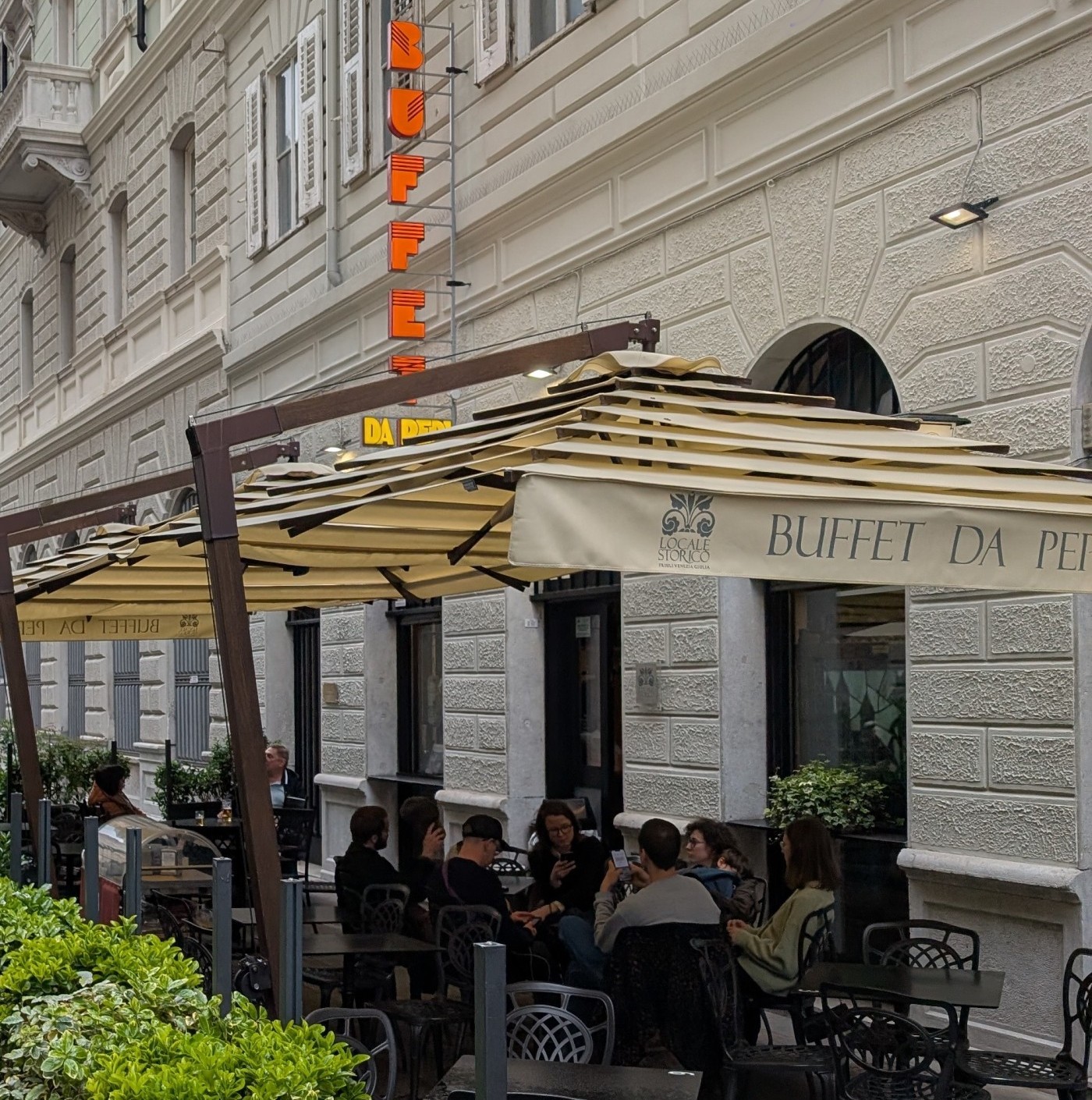
Oh, the food! Trieste is a true melting pot of flavors—Austrian, Slovenian, and Italian traditions all on one plate. Andrew (my husband) and I were amazed at how different it feels from other Italian cities, especially when it comes to what’s on the menu.
Start your day like a local with a rich nero (espresso) or a capo in B (a mini cappuccino served in a glass), then head to a cozy buffet—not the all-you-can-eat kind, but a classic Triestino tavern. These little spots serve hearty, warming dishes like jota (a sour bean and sauerkraut stew), gnocchi di pane, and tender bollito misto (boiled meats served with horseradish or mustard).
Seafood is another star here. The scampi alla busara, with its garlicky tomato sauce, is pure bliss, and we’ve had some of the freshest branzino (sea bass) right on the harbor.
For dessert? Don’t skip presnitz or putizza, both packed with dried fruit and nuts—a sweet reminder of the city’s Austro-Hungarian roots.
When to Visit Trieste
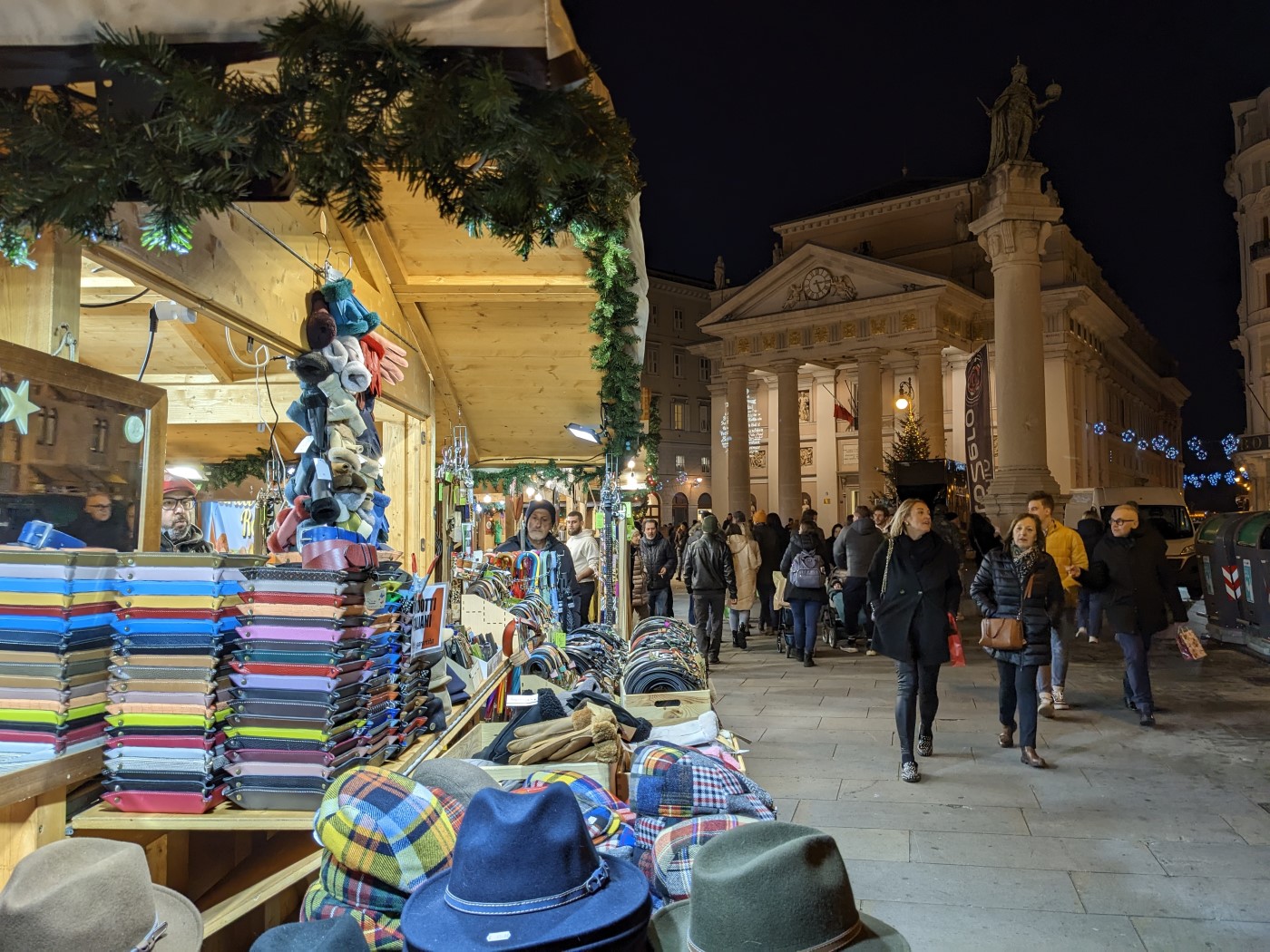
Trieste is an incredible destination all year round. During the spring, summer, and early autumn, you've got the beaches, pavement dining, and wine tastings at vineyards on the hills around the old town.
In winter, the heart of the city turns into a winter wonderland. Like something out of a children's fable, the streets are lined with Christmas markets, ice skaters zoom around the outdoor ice rink in Piazza Unità d'Italia, and I get all Christmassy and happy watching them while sipping on a glass or two of "Caldarrosta," often called Vin Brûlé in Italy. Caldarrosta is made from red wine heated with spices such as cinnamon, cloves, nutmeg, sugar, and sometimes orange slices, and I have yet to find a better way to warm up while wandering around outdoor markets on a chilly winter's evening.
So, my advice, when it comes to deciding when to visit, is to come on over whenever you can. It is always a great time to visit Trieste.
Day Trips from Trieste
Udine is only a little over an hour by train from Venice, and it is fabulous. Nobody has ever heard of Udine, and before I moved to Trieste, I had never visited either. I wasn't expecting much, but I was literally blown away by this little city; it is one of the loveliest smaller cities I have visited anywhere in Italy. You absolutely must visit.
Just a short boat ride away is Muggia, a charming little coastal town with a distinctly Venetian feel. Its narrow streets, pastel-colored houses, and quiet harbor offer a perfect escape from the bustle of Trieste. The seafood here is incredible, and it's the ideal spot to enjoy a leisurely lunch by the sea. Every chance I get, I head to Muggia. Here's everything you need to plan your visit to Muggia.
Grotta Gigante is a must-see. Located just outside the city, this is one of the largest accessible caves in the world. Inside, you’ll be amazed by its massive stalactites and stalagmites. The sheer scale of the cave is jaw-dropping. Walking through those huge chambers makes you feel so small in the best possible way.
A day trip to Palmanova offers a fascinating glimpse into history. Known as the "star-shaped city," this UNESCO World Heritage site was built in the late 16th century as a military fortress. Explore the Piazza Grande, the heart of Palmanova, and its surrounding walls, which offer panoramic views of the region.
Head to Grado, a seaside town just 40 minutes from Trieste. Known as the "Island of the Sun," Grado offers sandy beaches, charming canals, and a delightful old town. You can relax by the sea, enjoy fresh seafood, or wander through the narrow streets of the historical center. Grado also has a fascinating history, with the Basilica di Sant'Eufemia showcasing beautiful mosaics from the 6th century.
Lake Bled: A Fairytale Day Trip is just under two hours from Trieste and is truly worth the journey. Nestled in the Julian Alps, the lake’s iconic island, complete with a charming church, and the towering Bled Castle make for a picture-perfect scene. You can take a traditional pletna boat to the island, enjoy a hike around the lake, or simply take in the stunning views from the shore. Don’t forget to try the famous Bled cream cake (kremšnita) at one of the local cafés—it's delicious!
Getting to Trieste
Getting to Trieste is really easy; there are hourly trains from Venice; the faster ones take around 90 minutes. If you are traveling from the UK, Spain, or Germany, then you can fly into Trieste's Ronchi dei Legionari Airport.
By road, Italy's main east-to-west highway, the A4, connects Trieste to Venice. The drive is a pleasant one along a very well-maintained toll road. If you aren't in a rush, then a stopover in Grado and/or Palmanova is a good idea. I mentioned both these towns in the day trips from Trieste section above.
Please Book with Us... Maria here, if you enjoy my site I'd love your support.
Simply book your next trip anywhere (not only to Italy) via the link below or with any of the hotel links on the website.
You'll get the best deal available and the income I receive helps me to remain independent and to keep bringing you more of beautiful Italy.
More Travel Tips:
- Book your tickets to museums and other attractions in advance on Tiqets.com
- Book your accommodation. Booking.com and Agoda help you to book accommodation in advance
- Book your excursions. Wherever you go, make the most of your time! Excursions with professional guides will help you do this - choose a location and the best option for yourself on Viator or Getyourguide
- Book your car. At least a month before is best. Use Discover Car Hire.
- Cash Back on Flights: Great deals & money back with WayAway
- Get peace of mind when traveling. Get insured with VisitorsCoverage.com
- Home
- Trieste
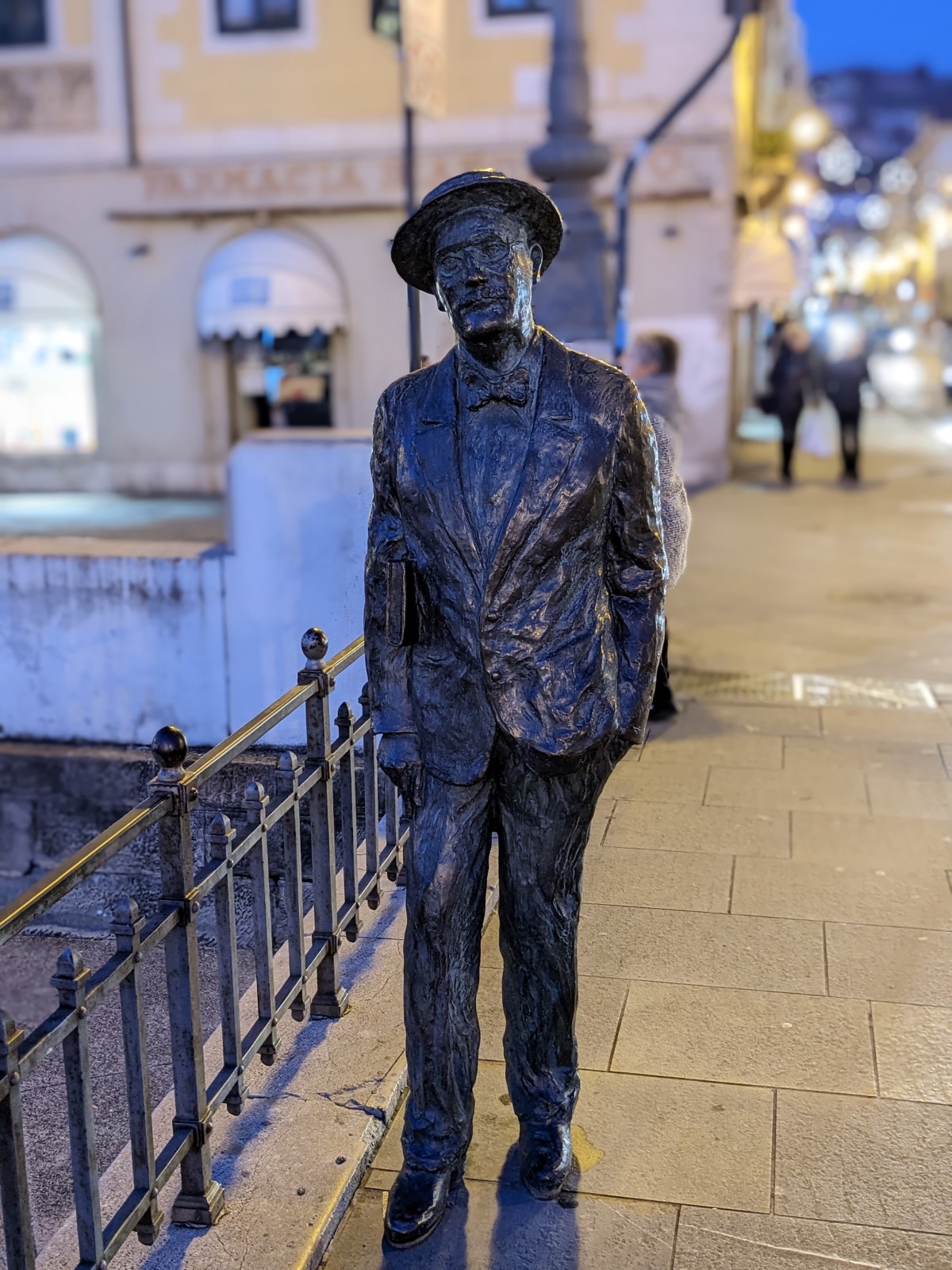
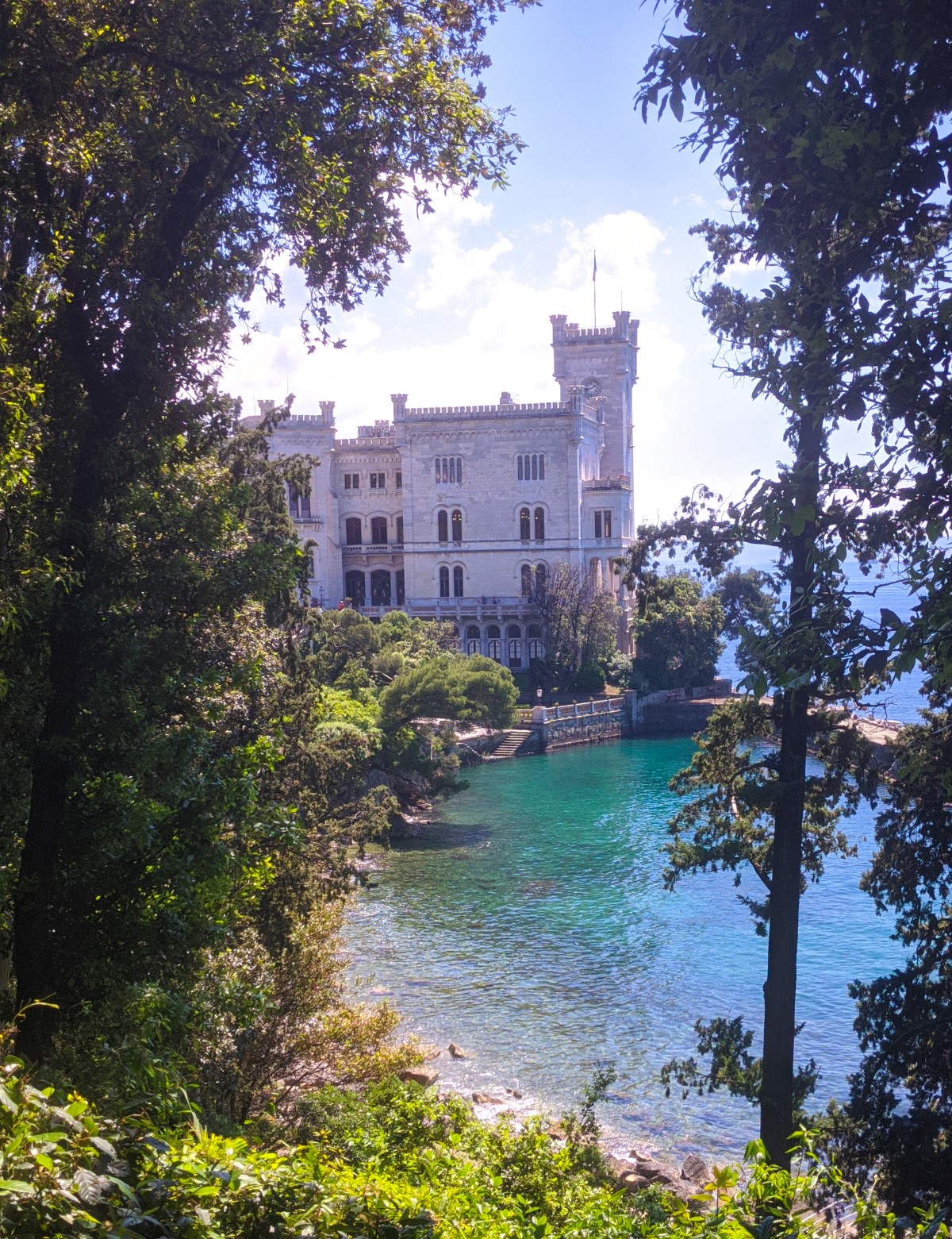
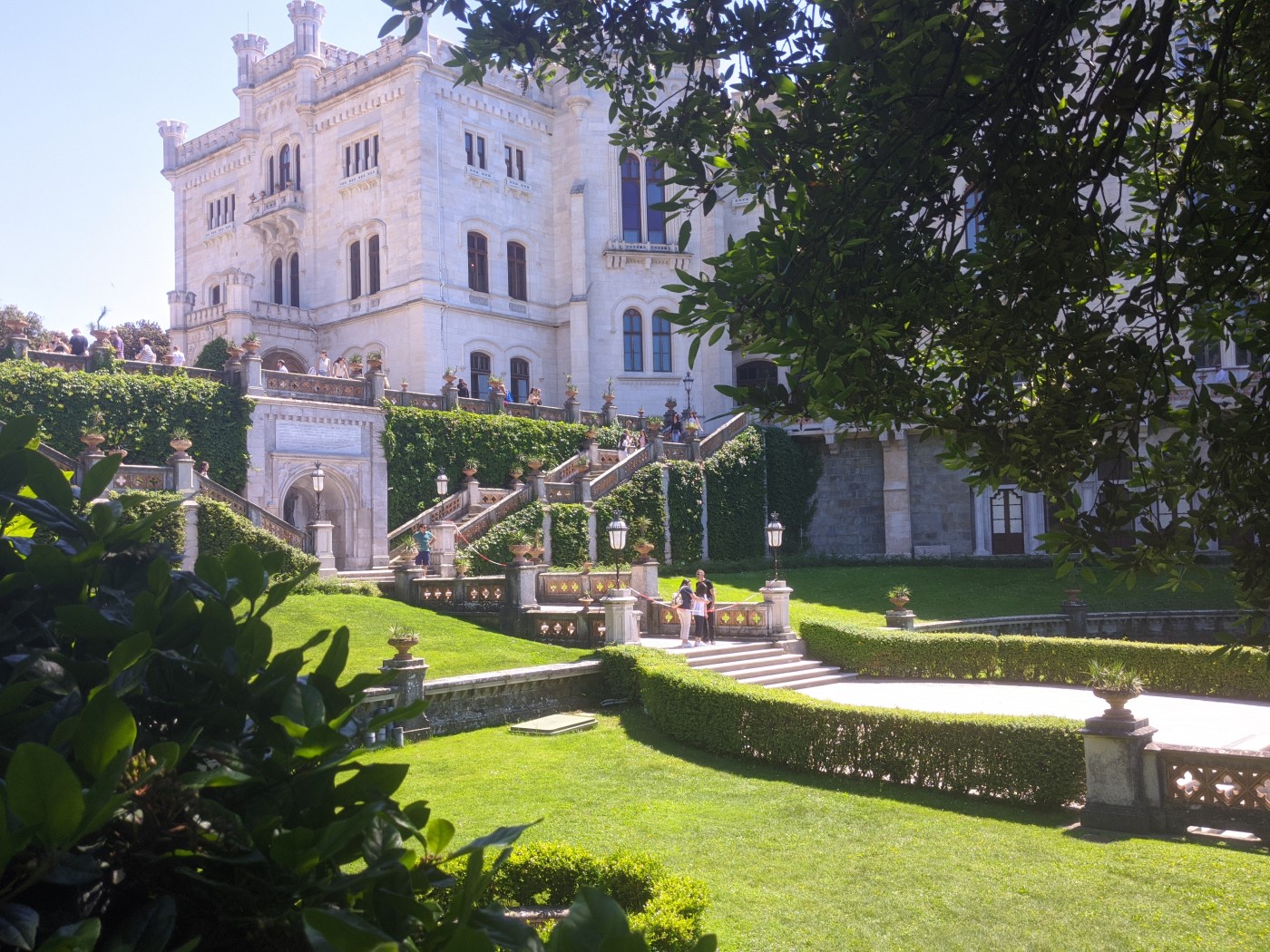
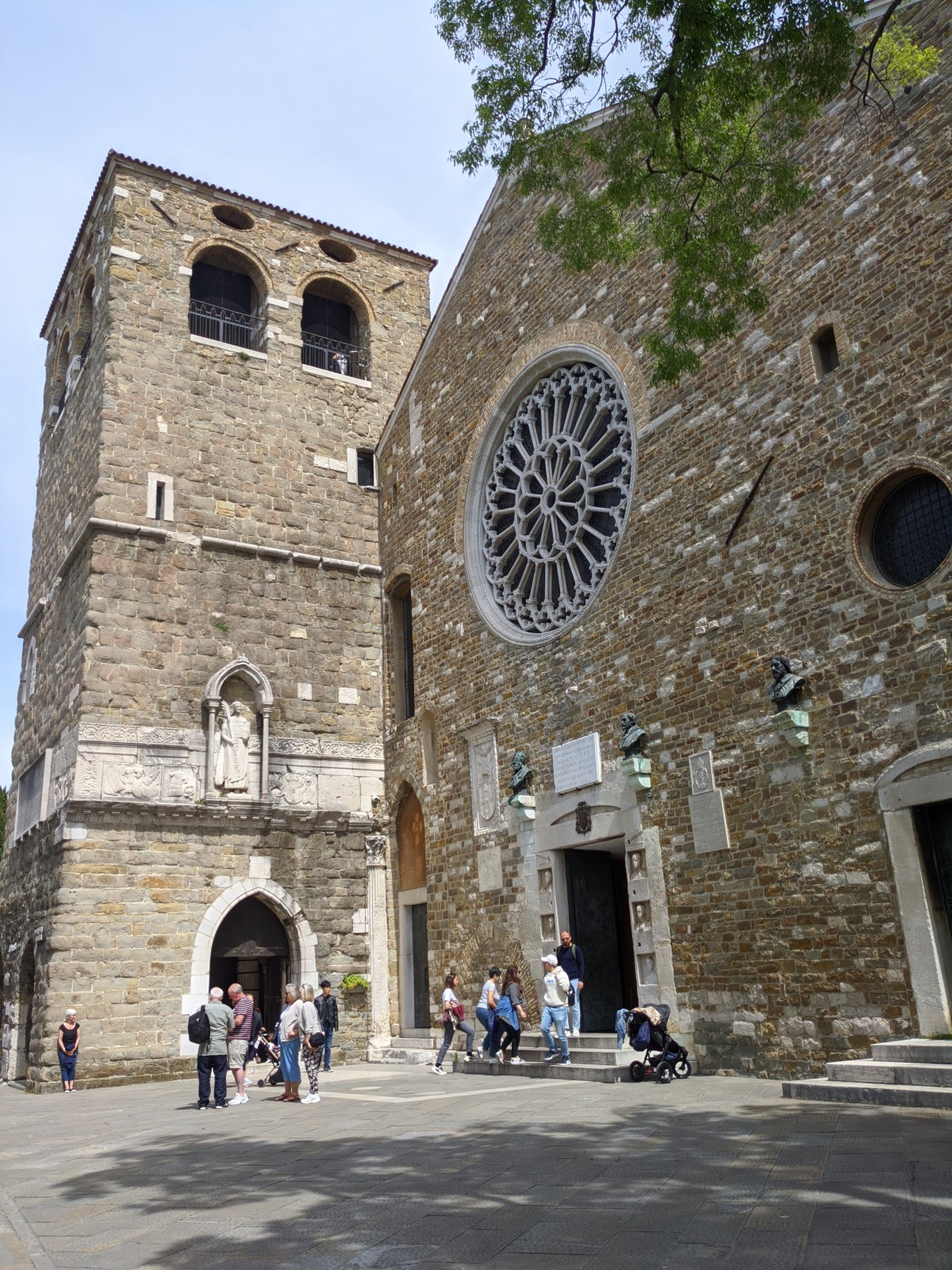
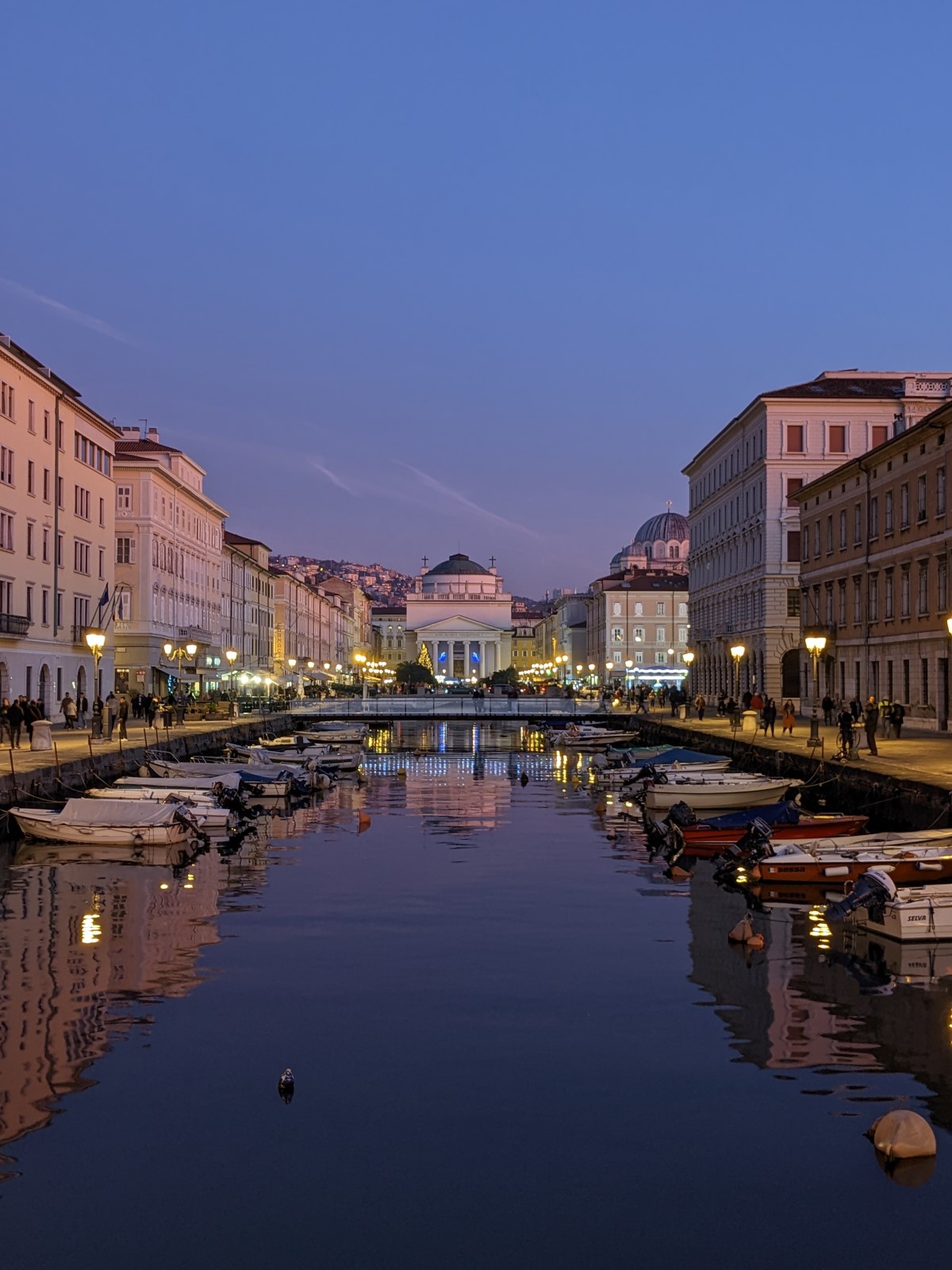
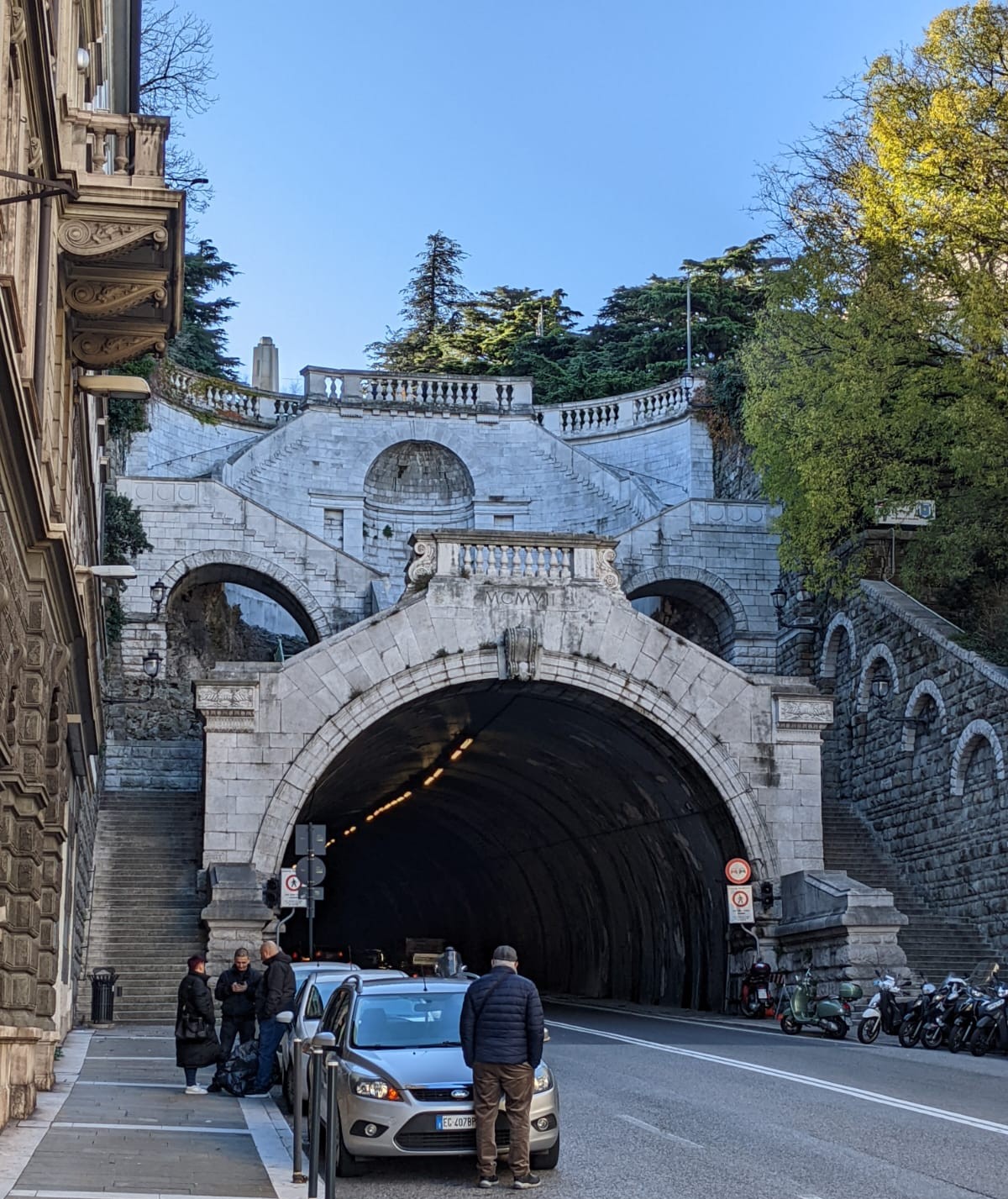
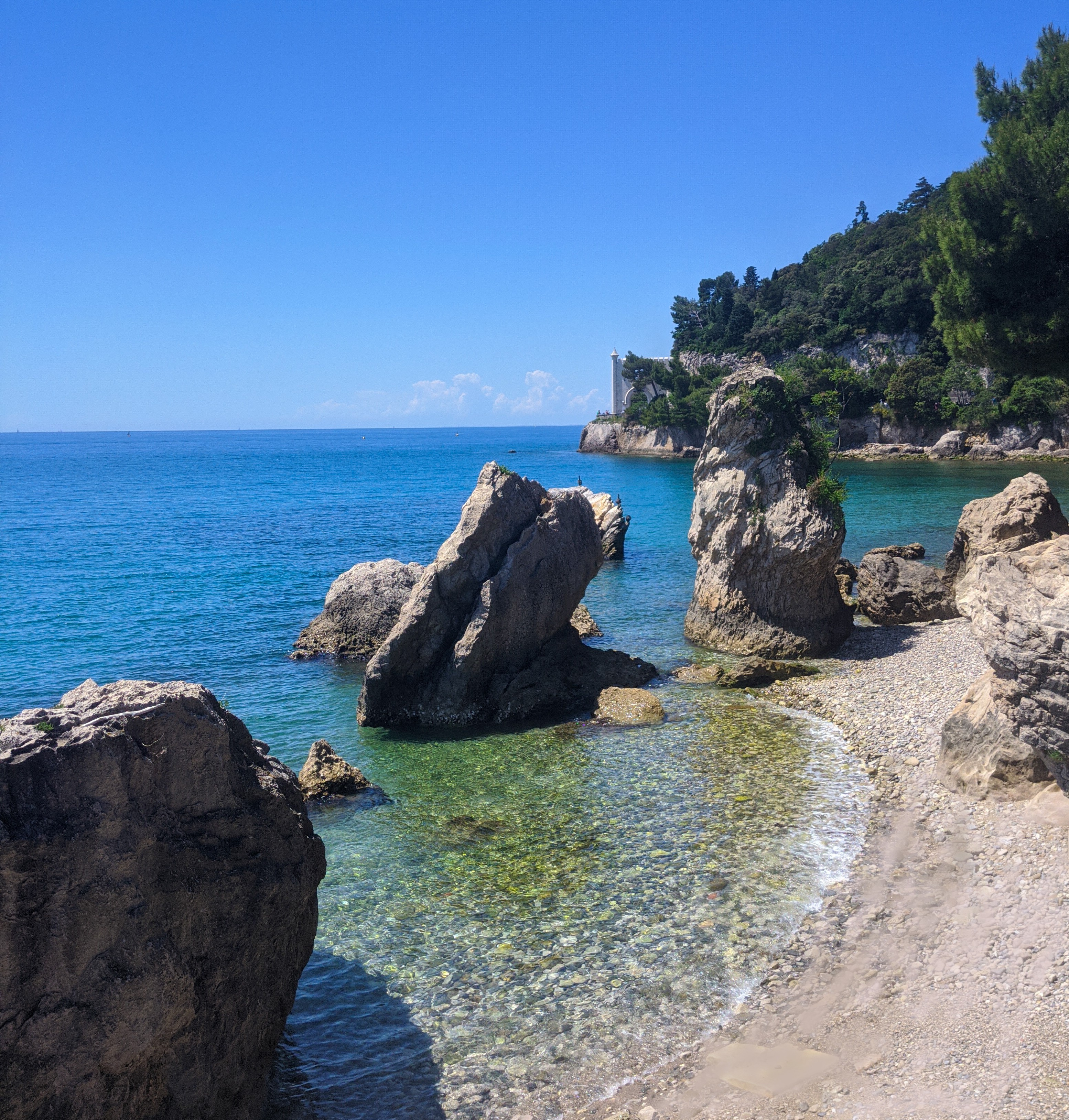
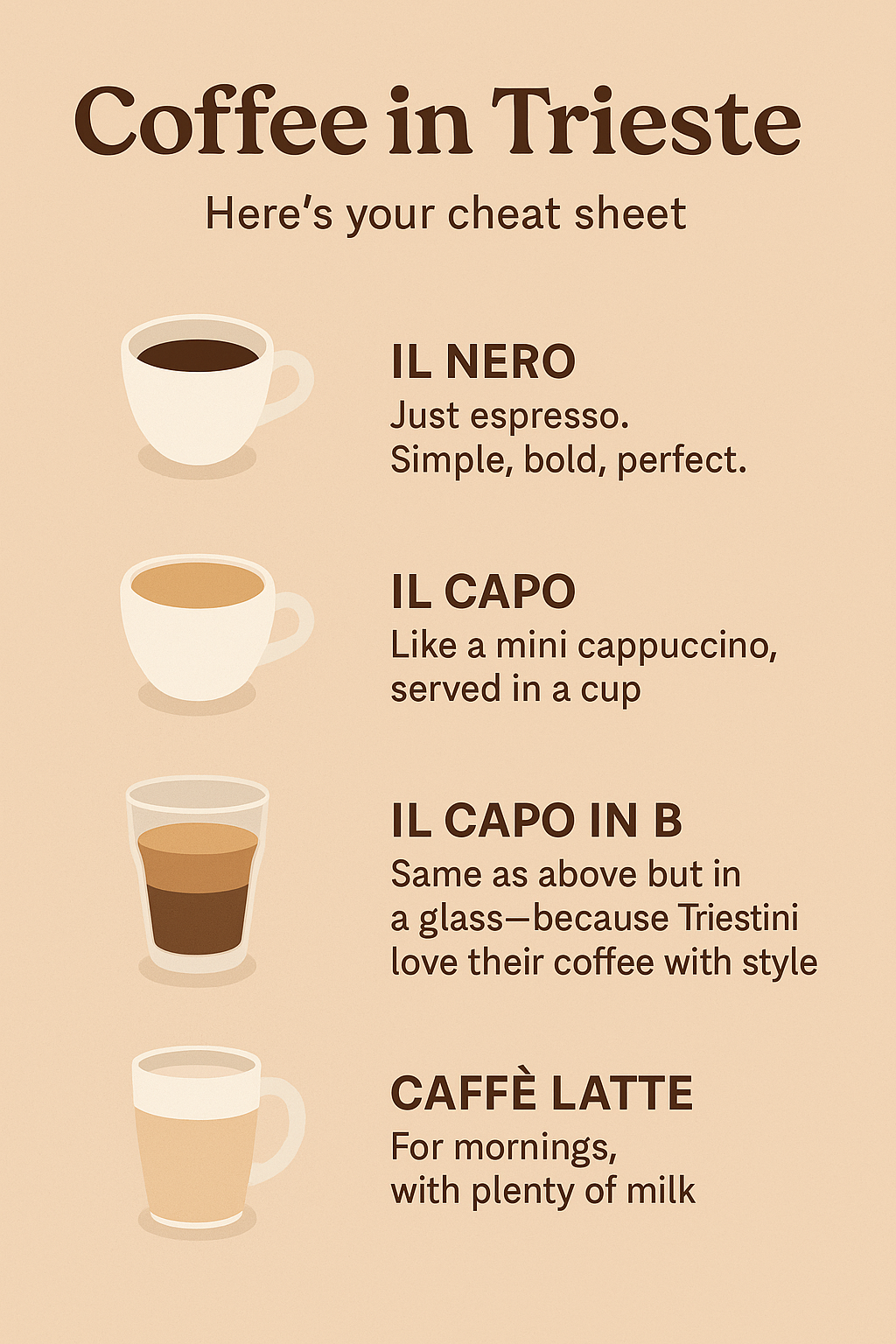
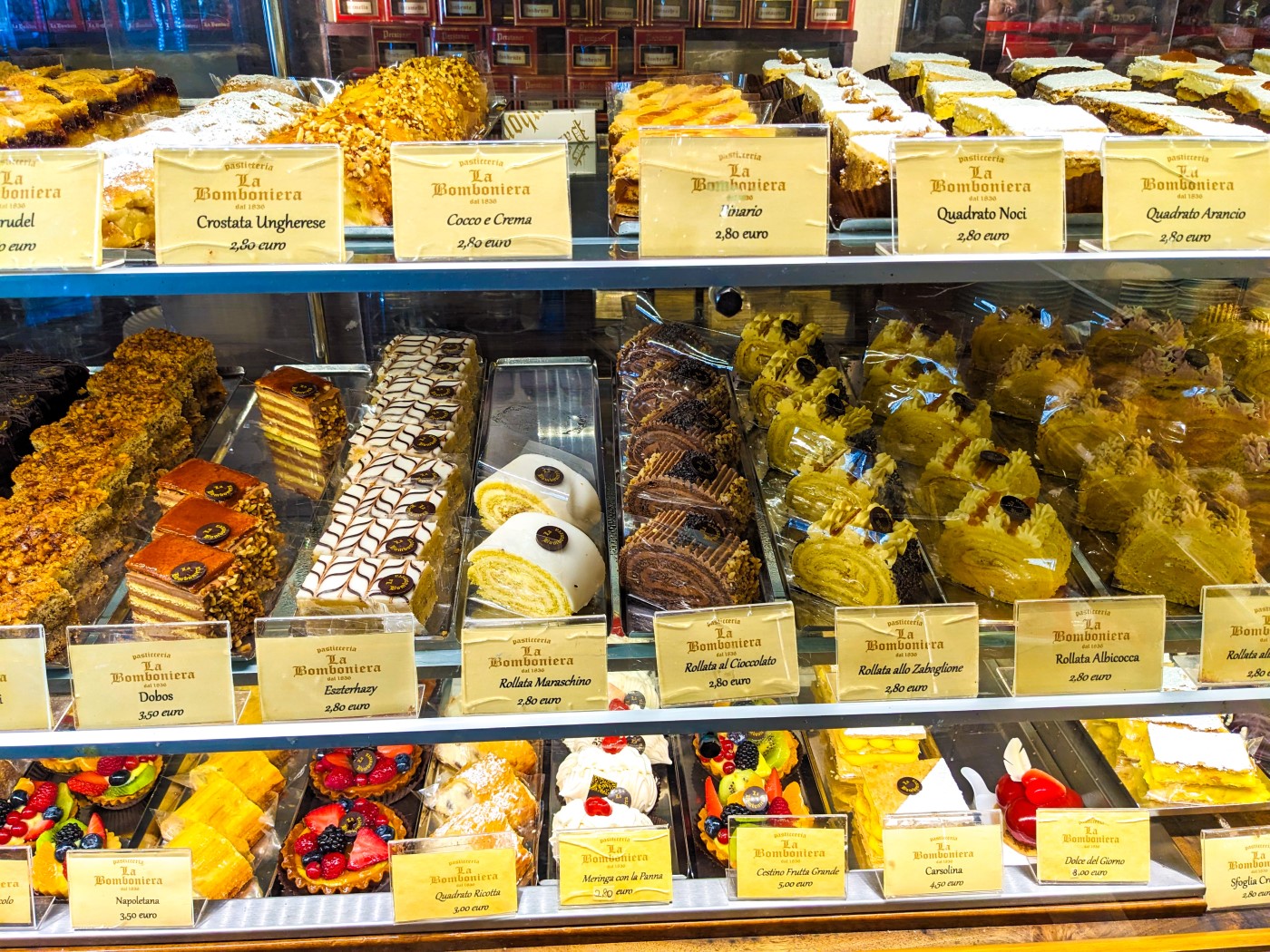





New! Comments
Have your say about what you just read! Leave me a comment in the box below.